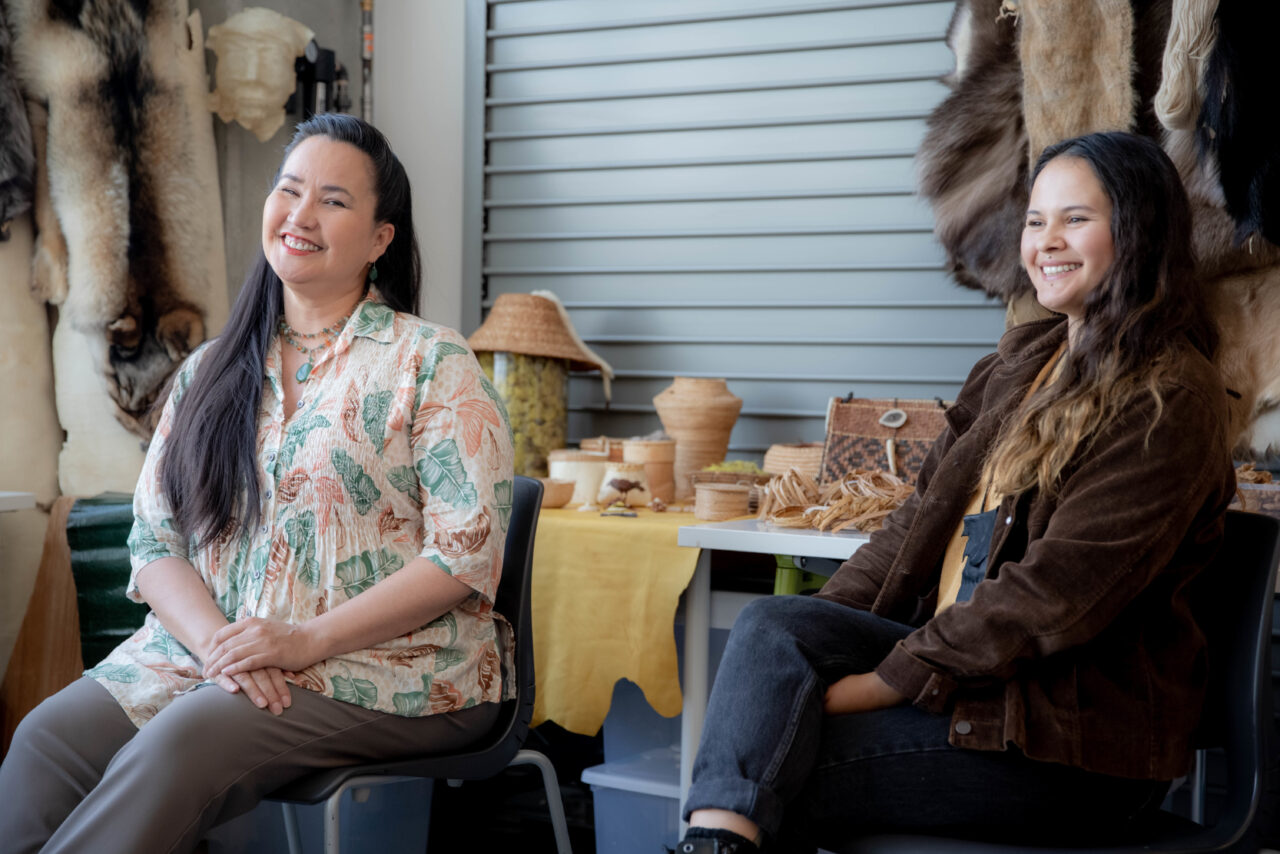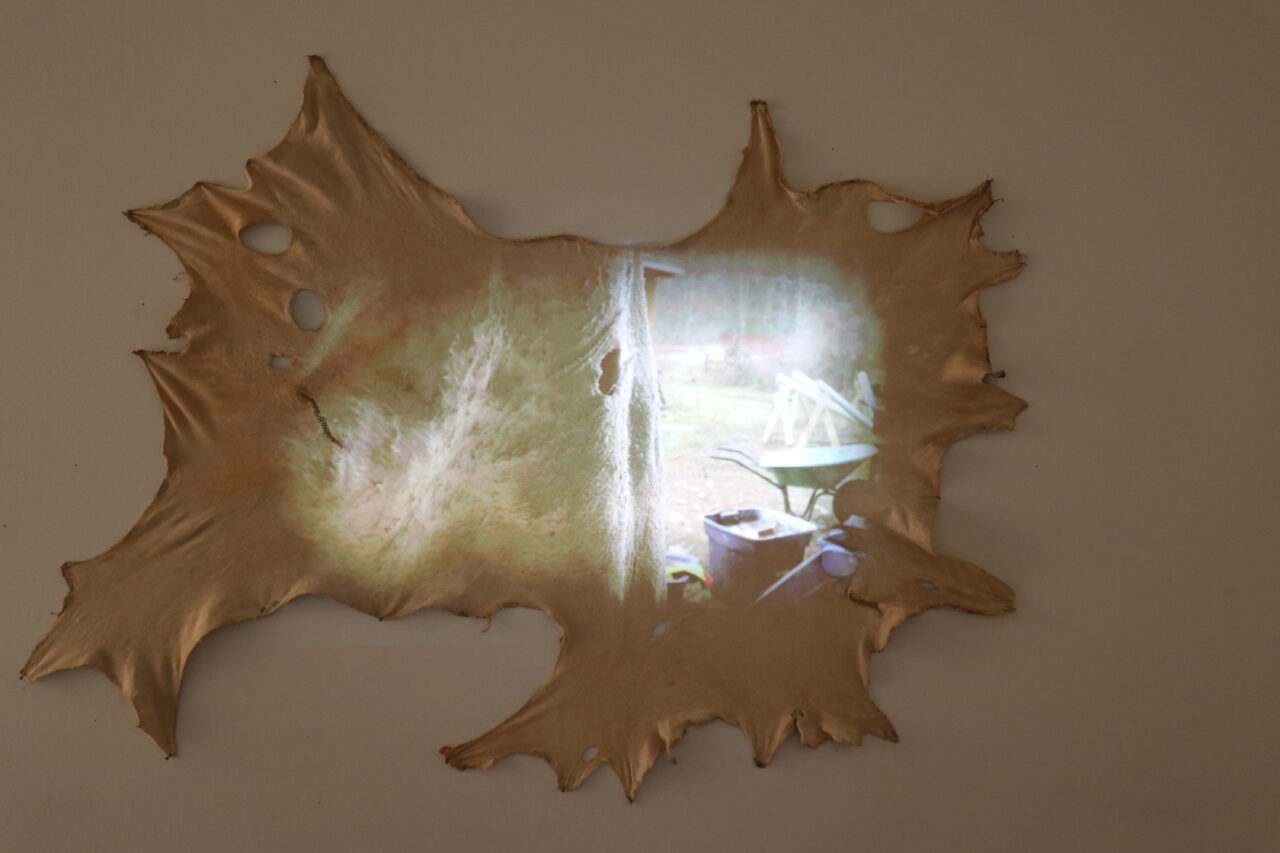Sydney Frances Pascal on Tanning Hides, Rekindling Connections and Learning from the AGP's Changemakers

Posted on | Updated
The Aboriginal Gathering Place provides a ‚Äòhome away from home‚Äô for Indigenous students, says the artist and ¬È∂π ”∆µ student.
Sydney Frances Pascal, artist, researcher, activist, family archivist and community advocate, whose work both defines and defies each of these titles, sits in the (AGP) midmorning on a rainy Tuesday.
The AGP is quiet, though working steadily in each of its three offices, just behind Sydney’s chair, are the women who run Aboriginal Programs and provide access to culturally specific learning for Indigenous students at Emily Carr University: Brenda Crabtree, Director of Aboriginal Programs and Special Advisor to the President on Indigenous Initiatives; Connie Watts, Associate Director of Aboriginal Programs; and , who recently joined the team as Aboriginal Program Coordinator.
Technically a transplant from the prairies, Sydney is Vancouver Island-born, and a once-distant daughter of the Coast Mountains, now returned. Currently in the final stages of her undergraduate degree at Emily Carr, she was recently hired on as a paid researcher for the AGP. And while her work in that role has kept her plenty busy, she’s been keenly observing everyone around her.
“It’s been really humbling to see how they work and make changes happen — changes that I didn’t think were happening before,” she says of Brenda, Connie and Angela. “It’s been really eye-opening to learn from them, to just sit here, listening, watching.”

Connie Watts (L) and Sydney Frances Pascal (R)
In particular, Sydney is in awe of the diverse (and near-constant) work the AGP staff do to strengthen Indigenous community in and around ¬È∂π ”∆µ while somehow making it all look effortless ‚Äî so effortless that despite participating in AGP programs herself, it was only once Sydney became their colleague that she realized how many irons Brenda, Connie and Angela keep on the fire.
“Being a student and walking around here, you don’t really see how these things happen or how changes come to be,” Sydney says. “They’re just incredible people, the amount of work they have, and they’re just able to keep going. I feel like, ‘Well, I guess I can try and keep up,’ but holy moly.”
Yet Sydney has indeed been keeping up. This past year, she‚Äôs participated in the EAGLE program ‚Äî which connects Indigenous youth with industry professionals to help develop leadership and entrepreneurship in the areas of art, design, e-commerce and business ‚Äî and found time to contribute artwork to two exhibitions, one of which she helped curate. During the summer, she attended the 2020 Perspectives on Reconciliation virtual conference with Connie and ¬È∂π ”∆µ President Gillian Siddall ‚Äî a follow-up to the inaugural, in-person gathering of leadership from Canadian universities held last year in the Yukon.
But Sydney’s admiration for Brenda, Connie and Angela is also driven by another factor; she knows what it’s like to not have a place like the AGP.
“I grew up in the Edmonton area; I studied design for a couple of years and later did my diploma in Fine Arts there. The institution was split across the city up until my final year, so we didn’t have a space like [the AGP],” she says.

Projection on brain-tanned hide, by Sydney Frances Pascal.
“I don’t think I met one Indigenous person for the